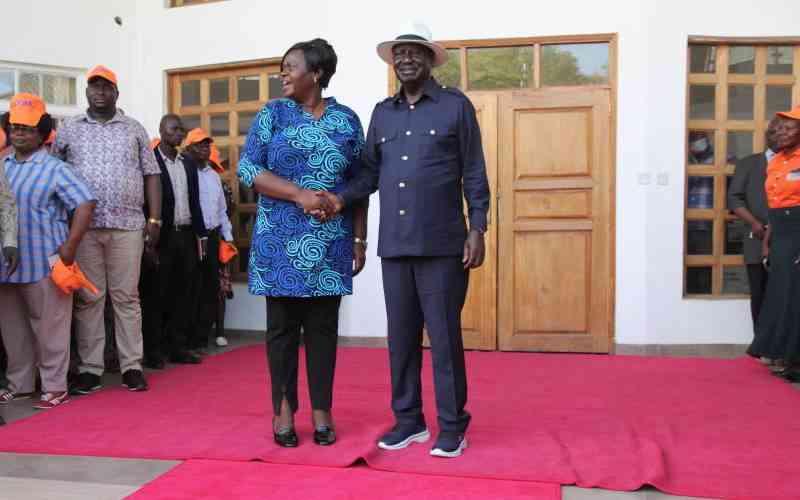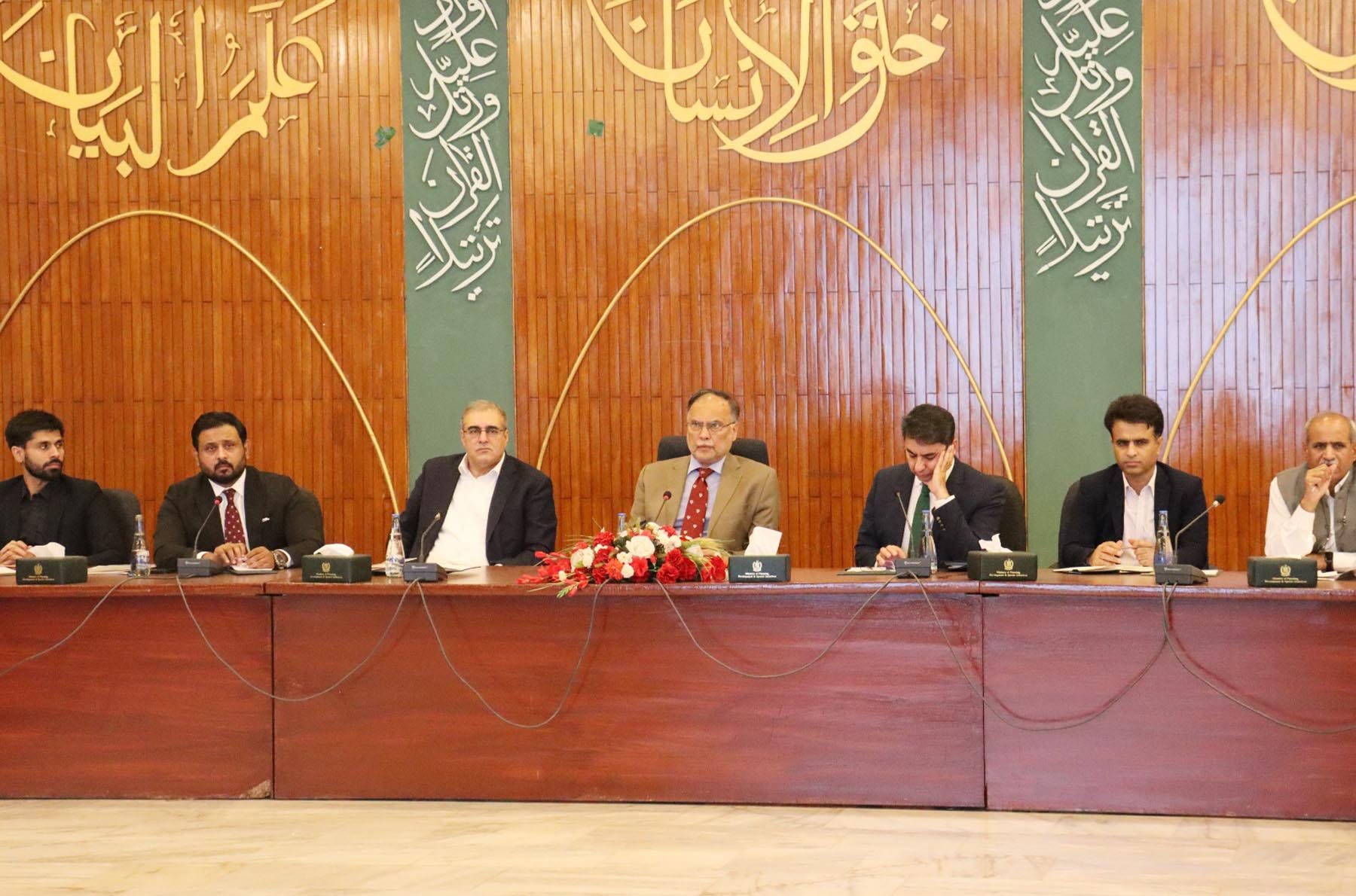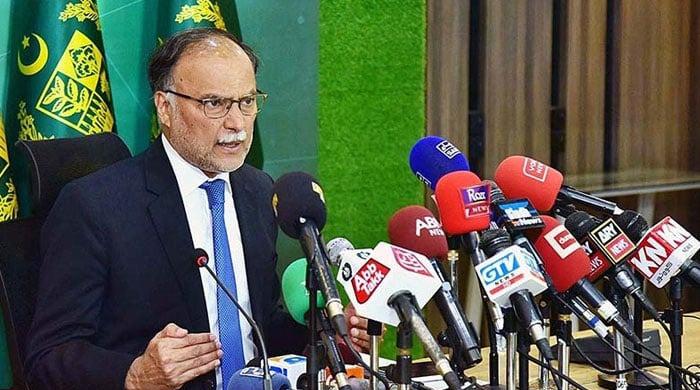APCC Proposes Historic Rs4.083 Trillion Financial Outlay

The Annual Plan Coordination Committee (APCC) convened in Islamabad, chaired by Federal Minister for Planning and Development Ahsan Iqbal, has recommended Pakistan's highest-ever national development outlay of Rs4.083 trillion for the upcoming fiscal year 2025-26. Alongside this historic outlay, a GDP growth target of 4.2 percent for the same period has been proposed for the approval of the National Economic Council. The proposed National Development Outlay includes Rs1 trillion for the Federal Public Sector Development Programme (PSDP), Rs288 billion for State-Owned Enterprises (SOEs) investment, and Rs2.795 trillion anticipated for Provincial Annual Development Programmes (ADPs).
The meeting took place as Pakistan navigates significant economic and geopolitical challenges while striving to implement its long-term development agenda under the 'URAAN Pakistan' initiative. Minister Ahsan Iqbal emphasized the government's commitment to sustaining development momentum through strategic resource realignment and policy reforms, despite limited fiscal space and competing demands. He highlighted that upon assuming office in early 2024, the government inherited a challenging economic landscape with constrained revenues and structural imbalances. However, the Planning Commission mobilized stakeholders around URAAN Pakistan, which aims to transform the nation into a $1 trillion economy by 2035 and a $3 trillion economy by 2047. The minister stressed that the success of URAAN Pakistan hinges on close coordination with provincial governments and aligning all development planning tiers with national priorities. Provincial representatives appreciated the transparent and collaborative planning process, noting that streamlined approvals were accelerating development.
A review of the PSDP for 2024-25 was presented, noting that the National Economic Council (NEC) had initially approved a National Development Outlay of Rs3,792.3 billion (comprising Rs1,400 billion Federal PSDP, Rs2,095.4 billion Provincial ADPs, and Rs196.9 billion for SOEs). Due to financial constraints, the federal PSDP was later reduced to Rs1,100 billion. As of May 31, 2025, Rs1,036 billion had been authorized for release, with Rs596 billion utilized. The PSDP included 1,071 projects with an approved cost of Rs13,427 billion; Rs3,216 billion had been spent by June 2024, leaving a substantial throw-forward liability of Rs10,216 billion, underscoring the need for project rationalization.
Minister Iqbal pointed out the critical need to increase the development budget, linking it directly to growth and job creation. He stated that due to fiscal discipline agreed with the IMF, an increase in PSDP was constrained, making revenue enhancement imperative. He urged for an increase in the Tax/GDP ratio from the current 10 percent to 16-18 percent, asserting that Pakistan cannot aspire to grow while being among the lowest tax-paying economies. To maximize investment value, the ministry conducted multiple project performance reviews. Consequently, over 118 slow-moving or redundant projects, primarily approved at the DDWP level, were recommended for capping or closure, potentially saving Rs1,000 billion. Furthermore, Rs84 billion were re-appropriated to fast-moving projects, and Rs80 billion were reallocated through TSGs for national priorities like the solarisation of tube wells in Balochistan.
Looking ahead to FY 2025-26, the proposed PSDP has been restructured based on sustainability, impact, and equity. The Finance Division, after IMF consultations, firmed up an Indicative Budget Ceiling of Rs1,000 billion for the federal PSDP, including Rs270 billion in foreign aid. The PSDP 2025-26 portfolio, developed after extensive consultations, includes 1,120 projects, with many designed for completion within 3-4 years if fiscal space is maintained. Strategic projects like the Diamer Bhasha Dam and the Hyderabad-Sukkur Motorway are prioritized. Balochistan is set to receive the highest share in development funds, nearly Rs250 billion. Sectoral allocations include Rs644 billion for infrastructure (Rs332 billion for transport and communications, Rs144 billion for energy), Rs150 billion for the social sector (Rs63 billion for education/higher education, Rs22 billion for health), Rs63 billion for special areas like AJK and G-B, Rs70 billion for merged districts of Khyber Pakhtunkhwa, Rs53 billion for Science and IT, Rs9 billion for governance, and Rs11 billion for production sectors (food, agriculture, industries). State-Owned Enterprises have also submitted development plans amounting to Rs288 billion.
The minister acknowledged a serious challenge stemming from increased tension and security risks following hostilities along the eastern border on May 7, 2025, which has led to increased defence spending requirements, further pressuring the development budget. He reassured that the government is committed to maintaining a careful balance, stating that national strength lies in its citizens' health, education, and economic empowerment, and Pakistan’s development journey will not be derailed. Innovative planning, smart budgeting, and rigorous monitoring will be adopted to address both defense and development needs.
The APCC endorsed several critical policy reforms: stopping at-source deduction of Cash Development Loans (CDL) from PSDP funds to improve project cash flows, ensuring provincial nature projects are funded by provinces (except those of strategic national interest or in deprived regions), imposing a moratorium on DDWP-level project approvals during the IMF programme tenure (except in exceptional, justified cases reviewed by CDWP), and prohibiting the diversion of development funds to recurring expenditures.
Reiterating the government's resolve, Minister Iqbal highlighted URAAN Pakistan's guiding vision, rooted in five pillars: Exports, E-Pakistan, Energy and Infrastructure, Environment and Climate Resilience, and Equity, Ethics and Empowerment. He called for shared commitment from all stakeholders. In discussions with journalists, Iqbal confirmed that fiscal space would be provided for strategic projects under Uraan Pakistan, including the Diamer Bhasha Dam, Sukkur Hyderabad motorway, N-25 in Balochistan, and Karakoram Highway phase two. He emphasized synergy between central and provincial projects and prioritization of foreign-aided and near-completion projects. He also mentioned that over 118 projects worth Rs1,000 billion were scrapped due to limited resources and that provincial-level projects should be handled by provinces, which have more resources than the federation. For the next fiscal year, the economic size target has been set at Rs129 trillion, with an export target of $35 billion, alongside the Rs1,000 billion development budget and a 4.2% GDP growth target.
Concluding his address at the APCC, Minister Iqbal stated, “We are not just managing a budget we are shaping the future. The world may see limitations, but we see opportunities. Our history is full of moments when the Pakistani nation rose above challenges through resolve and resilience. This is one such moment. Together, let us rise and lead Pakistan towards sustainable development, economic dignity, and national pride. URAAN Pakistan is not just a programme—it is the spirit of our national ambition.”










